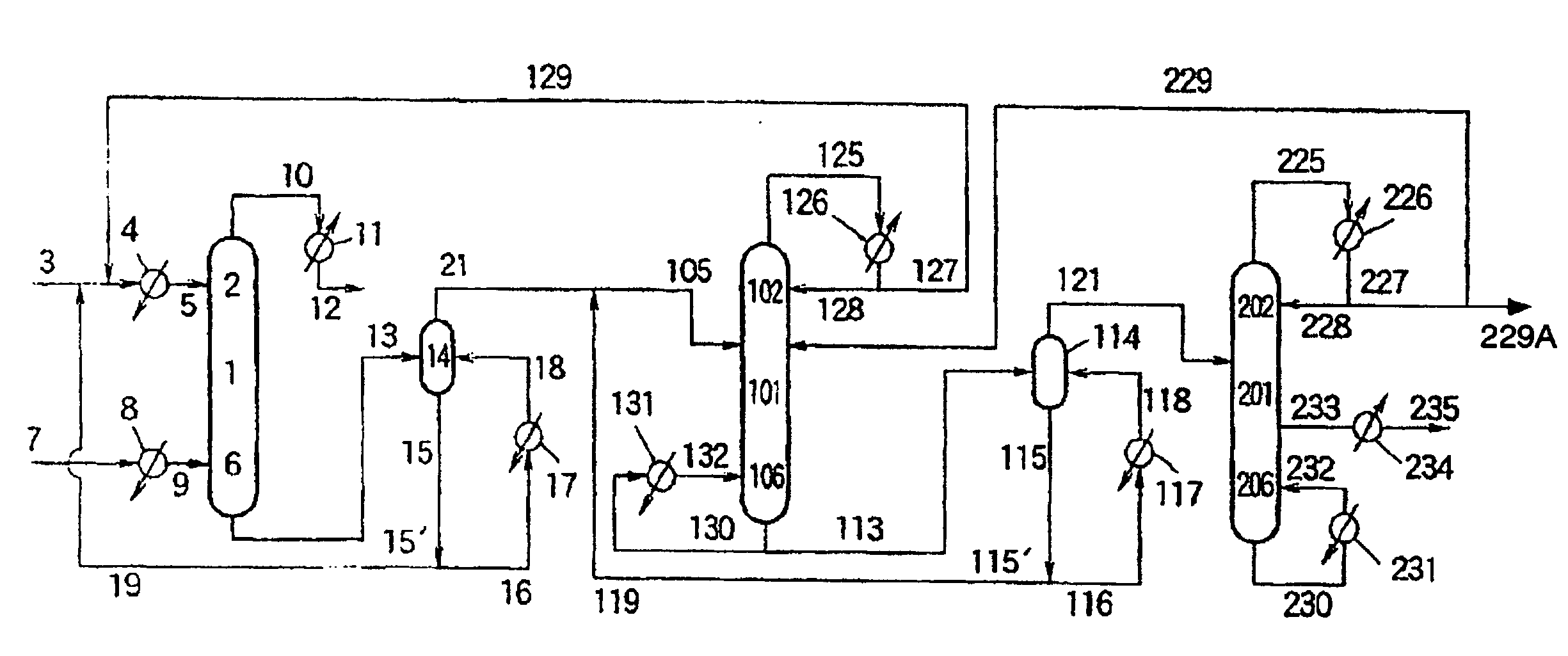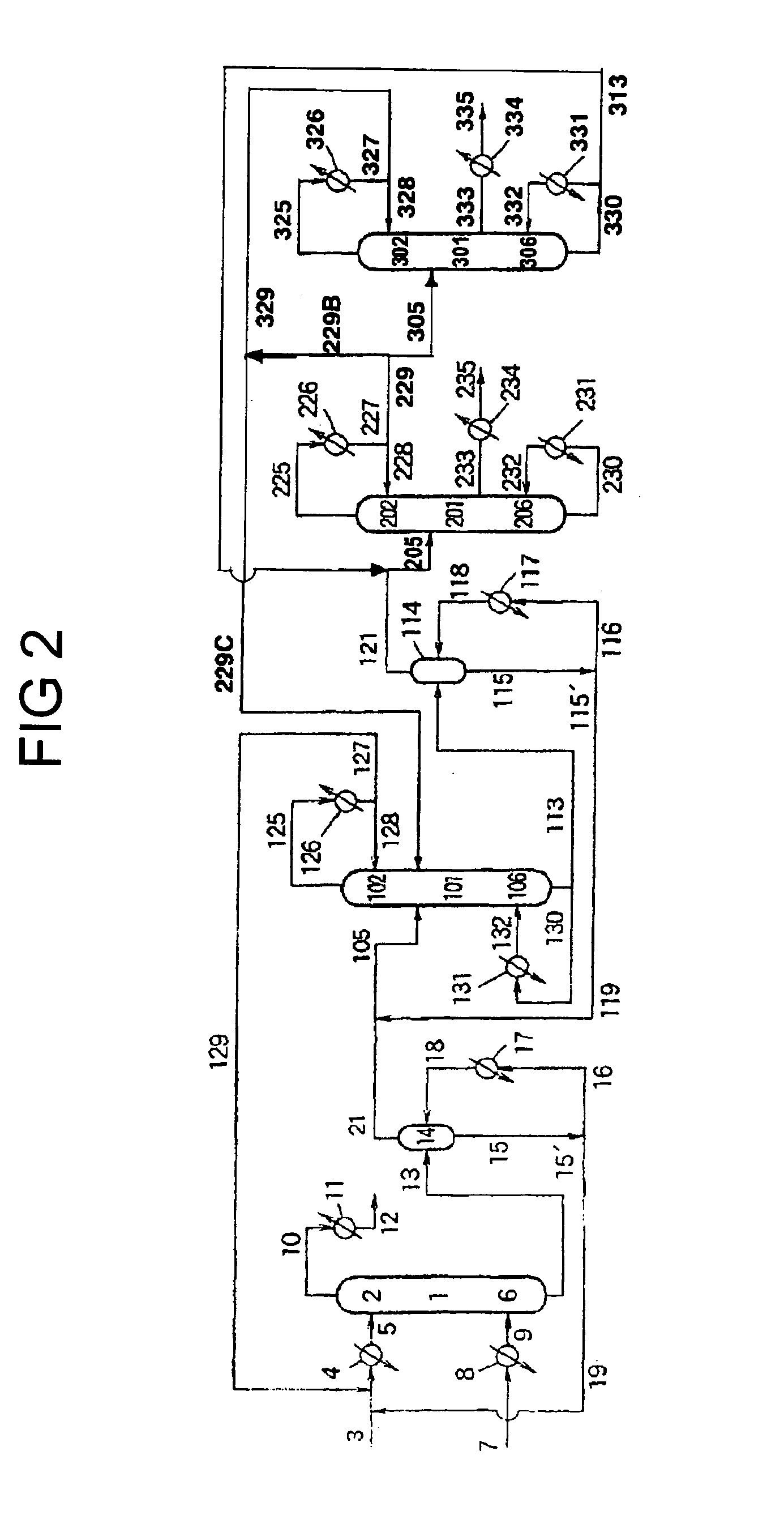Process for producing an aromatic carbonate
a technology of aromatic carbonate and process, which is applied in the direction of organic compound/hydride/coordination complex catalyst, physical/chemical process catalyst, metal/metal-oxide/metal-hydroxide catalyst, etc., can solve the problems of high reaction rate, difficult to produce the desired aromatic carbonate stably, and the above-mentioned method of producing aromatic carbonate on a commercial scale. achieve high polymerization reactivity, high purity, and harmful influence of aromatic carbon
- Summary
- Abstract
- Description
- Claims
- Application Information
AI Technical Summary
Benefits of technology
Problems solved by technology
Method used
Image
Examples
example 1
[0151]
[0152] A mixture of 40 kg of phenol (PhOH) and 8 kg of lead monoxide was heated at 180° C. for 10 hours, thereby performing a reaction. After that period of time, water formed in the resultant reaction mixture was distilled off together with unreacted phenol to thereby obtain catalyst A.
[0153]
[0154] Using catalyst A, production of diphenyl carbonate was performed using a system as shown in FIG. 1. Continuous multi-stage distillation column 1 was comprised of a plate column having a height of 12 m and a diameter of 8 inches and equipped with 40 sieve trays. A mixture of dimethyl carbonate (which contained 58 ppm by weight of CH3OCH2CH2OCOOCH3, precursor of the aromatic carbonate ether (CH3OCH2CH2OCOOPh)), phenol and methyl phenyl carbonate was continuously fed in a liquid form from conduit 3 through preheater 4 and conduit 5 into continuous multi-stage distillation column 1 at a position of 0.5 m below top 2 thereof at a rate of 31 kg / hr, and was allowed to flow down inside mu...
example 2
[0161] Diphenyl carbonate was produced in substantially the same manner as in Example 1, except that a system as shown in FIG. 2 was used instead of a system as shown in FIG. 1, and that the following step was further performed: the condensate withdrawn through conduit 229 (wherein the condensate was obtained by condensing the gas withdrawn from the column top of continuous multi-stage distillation column 201) was fed to continuous multi-stage distillation column 301 at a position of 0.8 m below the column top 302 thereof, which column was comprised of a packed column type distillation column having a height of 2 m and a diameter of 2 inches and having packed therein Dixon packings (3 mmφ). An aromatic carbonate ether was withdrawn from the continuous multi-stage distillation column 301. Continuous multi-stage distillation column 301 was operated under conditions wherein the temperature at the column bottom was 204° C. and the pressure at the column top was 1.5×102 Pa. Gas distilled...
example 3
[0165] Diphenyl carbonate was produced in substantially the same manner as in Example 2, except that the rate at which the condensate was withdrawn from conduit 335 was changed to 0.02 kg / hr. When the operation reached a stationary state, various analyses were performed. As a result, it was found that the condensate withdrawn from conduit 235 contained 99.99% or more of diphenyl carbonate, wherein the concentration of the aromatic carbonate ether (CH3OCH2CH2OCOOPh) in the condensate was 1 ppm by weight.
PUM
| Property | Measurement | Unit |
|---|---|---|
| boiling point | aaaaa | aaaaa |
| residence time | aaaaa | aaaaa |
| temperature | aaaaa | aaaaa |
Abstract
Description
Claims
Application Information
 Login to View More
Login to View More - R&D
- Intellectual Property
- Life Sciences
- Materials
- Tech Scout
- Unparalleled Data Quality
- Higher Quality Content
- 60% Fewer Hallucinations
Browse by: Latest US Patents, China's latest patents, Technical Efficacy Thesaurus, Application Domain, Technology Topic, Popular Technical Reports.
© 2025 PatSnap. All rights reserved.Legal|Privacy policy|Modern Slavery Act Transparency Statement|Sitemap|About US| Contact US: help@patsnap.com



